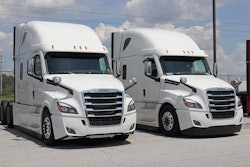The term green energy can take on a lot of interpretations. I suggest one realist’s definition is that green energy is any energy that groups can make money off of.
The number of energy avenues being funded by federal, state and local governments and other groups has mushroomed. Countries like France and Germany are debating whether or not hydrogen from nuclear energy can be considered green. Hydrogen made from natural gas can be considered green if it is combined with new technology for carbon capture and sequestration. Sequestration is a big word to mean storage. Concepts that re-use captured carbon such that their average net emissions are low enough can be considered green.
Congress and U.S. Department of Energy wrote a definition for greenness into the Inflation Reduction Act (IRA) that has a sliding scale of greenness based on lifecycle greenhouse gas emissions (GHG) rates per qualified clean hydrogen (QCH) as shown in this table:

The National Law Review summarized the definition of QCH as hydrogen that is “produced through a process that results in a lifecycle greenhouse gas emissions rate not greater than four kilograms of CO2e per kilogram of hydrogen.” Such hydrogen must be produced in the U.S. in the taxpayer’s ordinary course of trade for sale or use and must be verified by an unrelated third party.
So green hydrogen is not defined by how you make the energy, but by how much GHG in total the system produces in creating each kilogram of hydrogen. As a former systems engineer writing aerospace requirements documents, I embrace that the regulations are written around the “what” rather than the “how.” That is the goal of proper specification writing. You define what you want and then let the marketplace and the innovators figure out various “hows” of getting it done. Another term for greenness is “carbon intensity.”
However, the color of energy matters as well. I proposed an energy source color spectrum in the 2020 NACFE report Making Sense of Heavy-Duty Hydrogen Fuel Tractors. In working on a follow-up to that report to be released this spring, I came across Volvo’s great graphics on the topic, which I’ve summarized in this figure.










